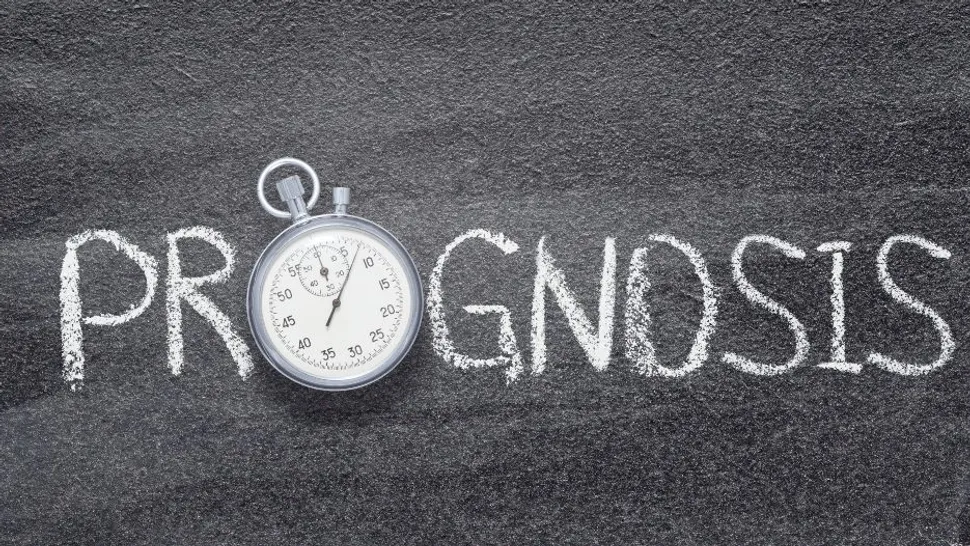Understanding Myelofibrosis Prognosis

In myelofibrosis, scar tissue within the bone marrow impairs its ability to produce new blood cells. This condition can arise from primary factors such as mutations in bone marrow cells or secondary factors like chemotherapy, other cancers, or lesions that disrupt bone marrow cell function.
It is a progressive disease whose severity depends on the mutations present, the cause and the symptoms each patient has. While some people have a rapidly progressive disease, others may live without symptoms for years.
Predicting how long someone will live with myelofibrosis is a challenge that doctors still find difficult. Unlike solid tumors, blood cancers are challenging to stage and measure. To evaluate the severity of myelofibrosis, doctors use a scoring system to assess how likely a patient is to progress to a more aggressive disease.
How Is Myelofibrosis Prognosis Assessed?
Around 10-20% of people with myelofibrosis will progress to acute myeloid leukemia. This type of leukemia is challenging to treat and has a significant impact on a person’s life. For this reason, myelofibrosis prognosis will be directly linked to the patient’s risk of progressing to leukemia.
A helpful tool for doctors to assess risk is the DIPSS dynamic international prognostic scoring system, which takes into account the following factors:
- Age (65 or older)
- Symptoms (non-specific indicators like fever, fatigue, appetite loss, etc)
- Anemia
- High white blood cell count (leukocytosis)
- Circulating immature blood cells (blasts)
- Need for transfusions
- Genetic mutations in the bone marrow cells
These risk factors help quickly assess a patient to calculate an approximate life expectancy. However, doctors consider other factors when meeting patients and learning more about their lifestyle, habits, family history, and overall health.
When a risk factor is present, the scoring system will add one point, and the total score will determine the risk group and is related to an approximate life expectancy:
- 0 points = low-risk (15.4 years)
- 1 point = intermediate-1-risk (6.5 years)
- 2-3 points = intermediate-2-risk (2.9 years)
- 4 or more points = high-risk (1.3 years)
It is important to remember that this is not a definite prediction; it is based on statistics, and this type of information takes a long time to gather and is continuously updated. Many ongoing clinical trials and new treatments are being studied to extend life expectancy and improve the quality of life in patients with myelofibrosis.
A prognostic score helps doctors select the best treatment for each patient. If you want to learn more about myelofibrosis and its prognosis, visit How Long Will I Live With Myelofibrosis?
This is why it is very important to continue active research on high-risk myelofibrosis patients so that their progression can be prevented one day. To stay updated with the advances in myelofibrosis treatment, join our newsletter!
SUBSCRIBE TO MYELOFIBROSIS NEWSLETTER
Source:
In myelofibrosis, scar tissue within the bone marrow impairs its ability to produce new blood cells. This condition can arise from primary factors such as mutations in bone marrow cells or secondary factors like chemotherapy, other cancers, or lesions that disrupt bone marrow cell function.
It is a progressive disease whose severity depends on the mutations present, the cause and the symptoms each patient has. While some people have a rapidly progressive disease, others may live without symptoms for years.
Predicting how long someone will live with myelofibrosis is a challenge that doctors still find difficult. Unlike solid tumors, blood cancers are challenging to stage and measure. To evaluate the severity of myelofibrosis, doctors use a scoring system to assess how likely a patient is to progress to a more aggressive disease.
How Is Myelofibrosis Prognosis Assessed?
Around 10-20% of people with myelofibrosis will progress to acute myeloid leukemia. This type of leukemia is challenging to treat and has a significant impact on a person’s life. For this reason, myelofibrosis prognosis will be directly linked to the patient’s risk of progressing to leukemia.
A helpful tool for doctors to assess risk is the DIPSS dynamic international prognostic scoring system, which takes into account the following factors:
- Age (65 or older)
- Symptoms (non-specific indicators like fever, fatigue, appetite loss, etc)
- Anemia
- High white blood cell count (leukocytosis)
- Circulating immature blood cells (blasts)
- Need for transfusions
- Genetic mutations in the bone marrow cells
These risk factors help quickly assess a patient to calculate an approximate life expectancy. However, doctors consider other factors when meeting patients and learning more about their lifestyle, habits, family history, and overall health.
When a risk factor is present, the scoring system will add one point, and the total score will determine the risk group and is related to an approximate life expectancy:
- 0 points = low-risk (15.4 years)
- 1 point = intermediate-1-risk (6.5 years)
- 2-3 points = intermediate-2-risk (2.9 years)
- 4 or more points = high-risk (1.3 years)
It is important to remember that this is not a definite prediction; it is based on statistics, and this type of information takes a long time to gather and is continuously updated. Many ongoing clinical trials and new treatments are being studied to extend life expectancy and improve the quality of life in patients with myelofibrosis.
A prognostic score helps doctors select the best treatment for each patient. If you want to learn more about myelofibrosis and its prognosis, visit How Long Will I Live With Myelofibrosis?
This is why it is very important to continue active research on high-risk myelofibrosis patients so that their progression can be prevented one day. To stay updated with the advances in myelofibrosis treatment, join our newsletter!
SUBSCRIBE TO MYELOFIBROSIS NEWSLETTER
Source:

about the author
Jimena Vicencio
Jimena is an International Medical Graduate and a member of the HealthTree Writing team. She has a passion for languages and is currently learning Japanese. In her free time, she loves playing with her cats. Jimena is also pursuing a bachelor's degree in journalism.
More on Core Education
Trending Articles
Get the Latest Myelofibrosis Updates, Delivered to You.
By subscribing to the HealthTree newsletter, you'll receive the latest research, treatment updates, and expert insights to help you navigate your health.
Together we care.
Together we cure.
3x Faster.









